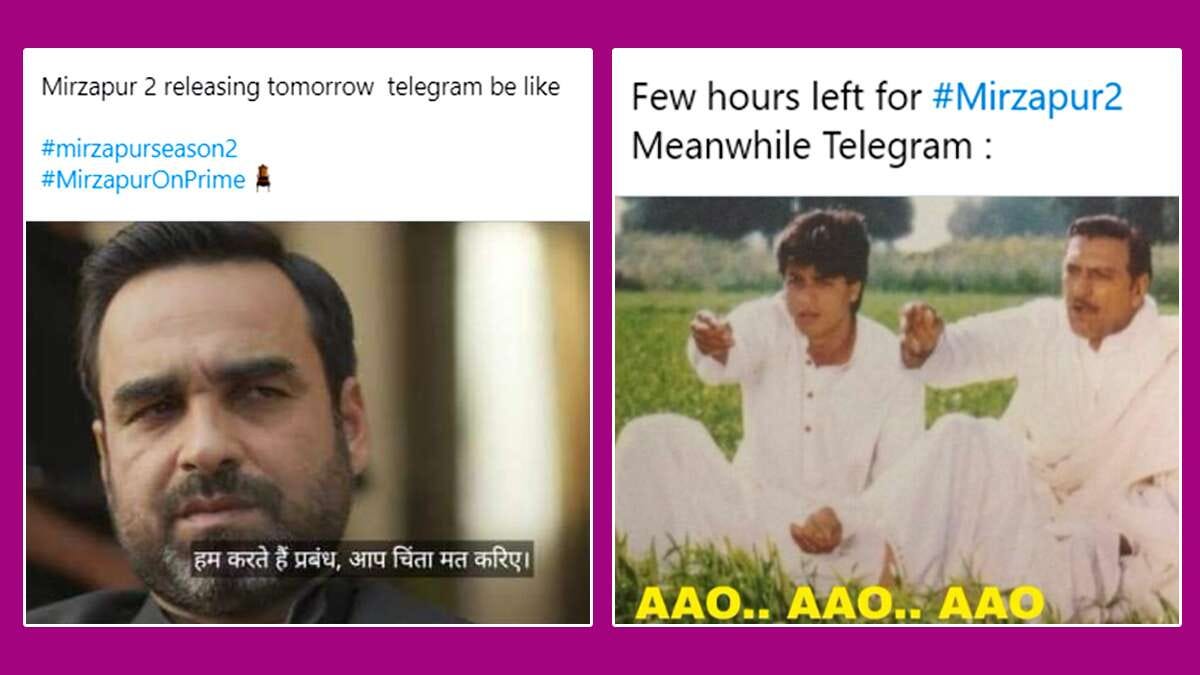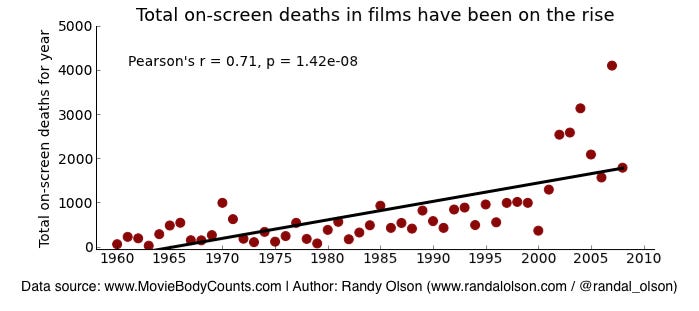"Mirzapur"fication
How the normalisation of violence, violence, blood and gore is impacting us?
I explore the trends that I observe. I am deeply fascinated by how our media consumption habits have evolved. In last week's newsletter, I explored how downloading English movies onto CDs in the early 2000s paved the path for the widescale adoption of English content across the OTT universe. Today, I stay the course on the same theme but go down the rabbit hole of a messier topic.
If you haven’t heard about Mirzapur (the TV show), you would be presumed to have lived under a rock. Mirzapur has recently become one of India's most successful TV franchises. And as they say, the true mark of the popularity of something these days is defined by how many memes are circulating the internet.
The Rise of “Realism”
With the fascinating storyline and the prowess of the lead actors aside, Mirzapur is one of the bellwethers of the recent trend of "keeping it real."
Most content produced these days follows the WYSIWYG theme. The director, scriptwriter, and actors focus on subtle elements that make the content relatable to viewers, leaving little to the imagination.
The creative hyperbole that has dominated since the 1990s is almost disappearing. We are moving away from the Karan Johar and Ekta Kapoor style that we were so used to.
There’s no repeat shot on screen. (Remember the heads turning thrice)
There is no background score to emphasise the mood.
There are no mutilated facial expressions to show the character's emotions.
These shows are relatable to the point that they are almost cathartic. After a few scenes, it feels like the character would be someone you know (if not you!)
The relatability is the main selling point for these shows. The characters on screen seem human.
They eat sloppily. They burp and fart. They speak in a conversational manner loaded with expletives. They are scared and tense most of the time. It feels human. It feels us.
This is what has made many people, including those who shunned prime-time shows years ago, return to vernacular TV content.
But not everything is innocent.
" Realism” can’t be selective. It permeates all aspects of the storyline.
There is actual violence shown.
There is actual abuse on screen.
The normalisation of violence
What started as a phenomenon of relatability driving the audience has unfortunately become a hook. The shows have increasingly become violent to the point that this is almost normalised.
In the mythological shows, the severing of a head was comical and plastic. A severed head on the end of a stick laughing.
In the quest to make it real, in a scene in Mirzapur, the head of one of the characters was chopped off using a butcher’s knife, with the blood splattering into the camera. Multiple hacks as it would take in reality.
This vivid description is meant to imagine the scene. If we can somewhat recreate it, it is because it has been normalised in our minds, thanks to multiple exposures to real-life violence.
Violence on-screen is bad; being desensitised is worse.
Overall exposure to blood, gore and violence is increasing over time. Source Link
This is a well-researched problem that has come to a similar conclusion across studies: screen violence is a real threat to mental health in children and adolescents.
With the normalisation of violence on screen, we are gradually getting used to it.
The more we are exposed to anything, the more our brain normalises it. Once something looks normal, we are desensitised to it.
When we saw fire for the first time, we would have been scared like cats, but over time, we got used to it. No, you can’t scare me by just showing fire. And if someone gets burned, we call it a freak accident and move on. We don’t blame the fire.
With so much violence happening all around us, will we come to a point where we are not appalled by it?
Will we consider it normal and not blame the perpetrator and move on?
Is this changing the basic fabric of us being human?
The jury is still out.
In this age of AI, we are inundated by chatGPT-driven narratives. I want to build independent and original long-form storytelling that makes people think, understand, reflect, and go beyond the surface—an attempt to relate with the readers at a human level. If you want to support this, consider buying me a coffee :)


